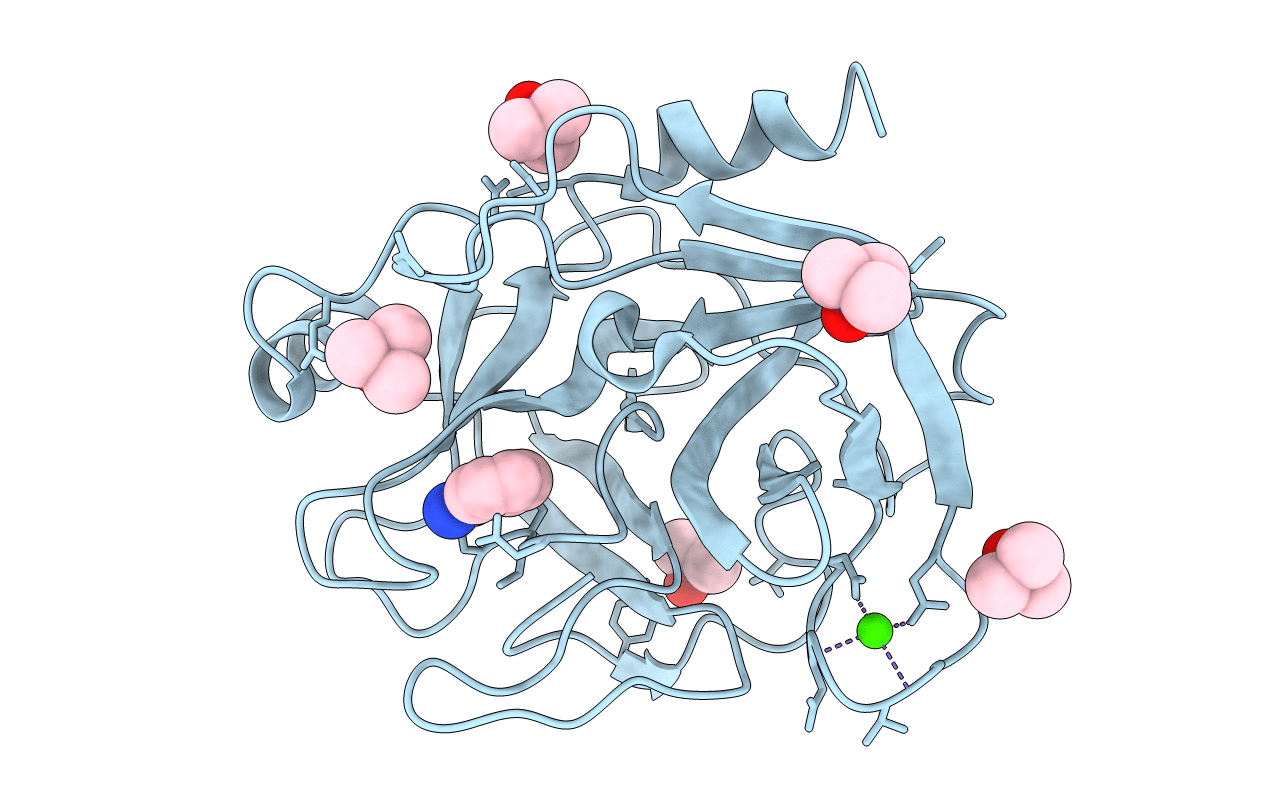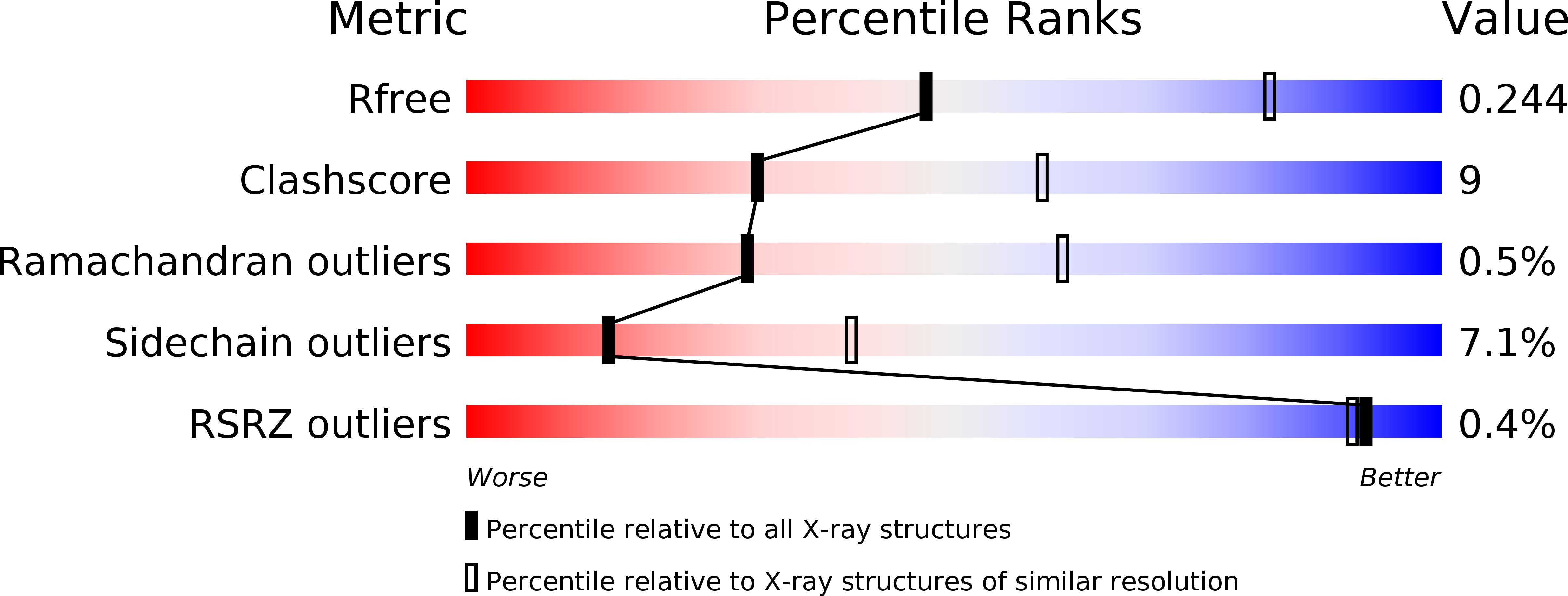
Deposition Date
2011-07-22
Release Date
2011-12-28
Last Version Date
2024-10-09
Entry Detail
PDB ID:
3T28
Keywords:
Title:
TMAO-grown trypsin (bovine)-previously unreported tetragonal crystal form
Biological Source:
Source Organism:
Bos taurus (Taxon ID: 9913)
Method Details:
Experimental Method:
Resolution:
2.80 Å
R-Value Free:
0.24
R-Value Work:
0.18
R-Value Observed:
0.18
Space Group:
P 41 21 2


